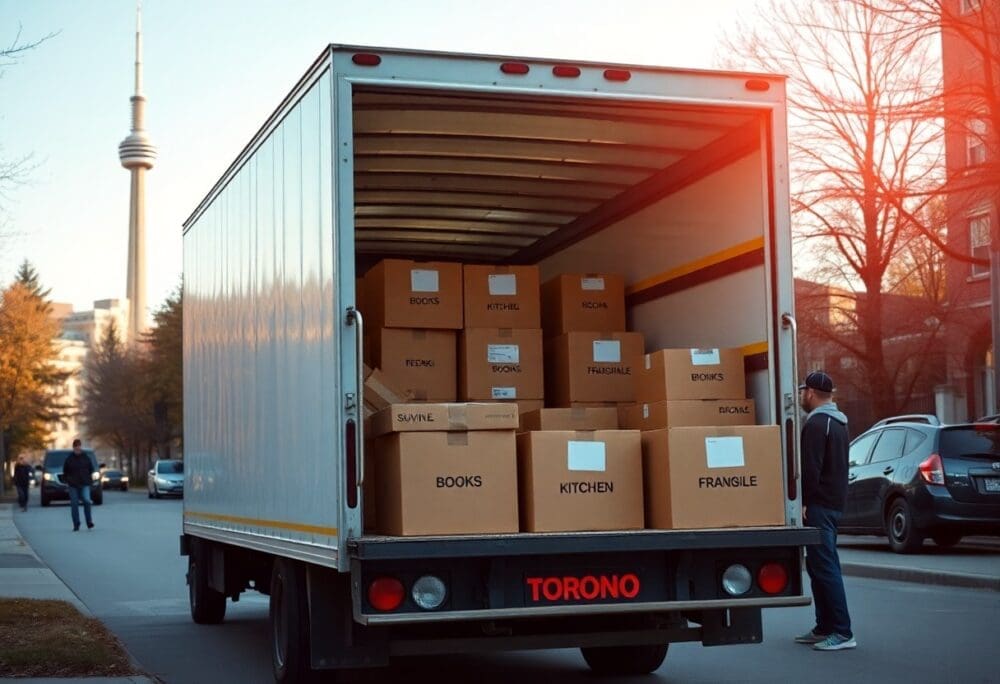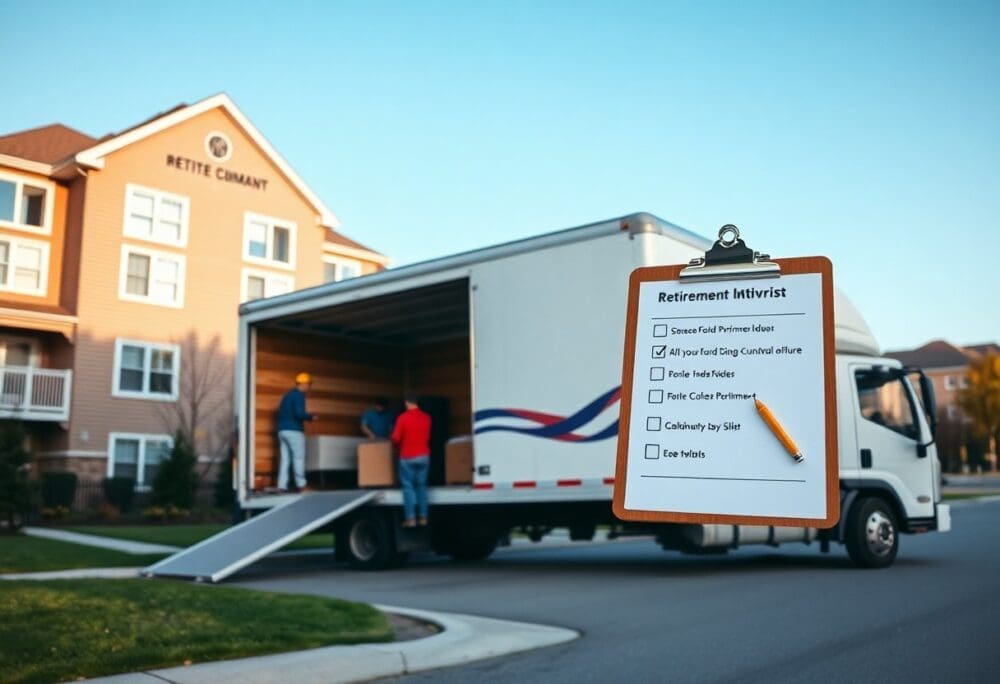There’s a way to streamline your transition into retirement in Toronto, making the process less stressful and more efficient. You can reduce clutter and ease your moving burden by strategically planning your downsizing. Prioritizing organization and understanding your new living space will significantly enhance your experience. Consider utilizing resources, like Downsize Your Home for Retirement in 6 Steps, to guide you through each phase. By taking proactive steps, you can create a comfortable and inviting home for your retirement years.
Key Takeaways:
- Plan ahead by creating a checklist that includes tasks, timelines, and vital contacts.
- Consider hiring professional movers or utilizing moving services that specialize in senior relocations.
- Downsize efficiently by sorting belongings early, donating, or selling items no longer needed.
Understanding Your Needs
Assessing your specific requirements is vital in making your move easier. Consider factors like space, accessibility, and location preferences. Think about whether you want a smaller home for maintenance ease or a location near amenities like healthcare and recreational activities. This analysis will guide your decision-making process moving forward.
Evaluating Your Lifestyle Changes
As you transition into retirement, your lifestyle may shift significantly. You might prioritize a community-oriented environment or seek peace in a quieter neighborhood. Assess how your routine and daily activities will change and what facilities or services you will need nearby. Understanding these shifts can streamline your search for the right home.
Determining Your Budget
Establishing your financial parameters is necessary for a smooth transition. Begin by calculating how much you can afford to spend on housing, factoring in costs like moving expenses, closing costs, and potential renovations. Prioritize transparency with your finances to avoid unexpected strain during the process.
To accurately determine your budget, consider your current income sources such as pensions and savings, and assess any potential expenses you may incur in retirement. Analyze the real estate market in your desired neighborhoods to set realistic price expectations. It’s wise to account for a buffer of at least 10-15% of your total budget for unforeseen expenses. This ensures flexibility for unplanned costs, such as necessary repairs or adjusting to new living expenses, ensuring a smoother transition into your new retirement lifestyle.
Choosing the Right Location
Your choice of location can significantly influence your retirement experience in Toronto. Factors such as the neighborhood’s atmosphere, proximity to necessary amenities, and the overall community vibe play an integral role. Research different areas to find a location that aligns with your lifestyle preferences, whether you seek urban excitement or suburban tranquility. Evaluating local culture, recreational opportunities, and safety will also help you find a place that truly feels like home.
Proximity to Family and Services
When deciding on a location, consider how close you are to family and vital services. Living near loved ones can enhance your support system, allowing for easy visits and shared activities. Additionally, access to healthcare facilities, grocery stores, and public transportation can reduce stress and improve your quality of life. In Toronto, neighborhoods like East York and Oakville offer excellent access to both family-friendly environments and necessary services.
Considerations for Accessibility
Your new home should accommodate any mobility concerns you may have. Look for properties that feature minimal stairs, wide hallways, and user-friendly layouts. Accessibility is not just about physical space; think about the neighborhood’s infrastructure, too. Areas with well-maintained sidewalks, ramps, and public transport options can enhance your mobility and overall comfort in your retirement.
For instance, neighborhoods such as Liberty Village provide accessible parks, smooth sidewalks, and easy access to transit routes, ensuring you can navigate community spaces without difficulty. Buildings with elevators, ground-floor units, or even bungalows can vastly improve day-to-day activities. Identifying your specific accessibility needs early will simplify the search for a suitable home, leading to a more relaxed retirement transition.
Downsizing Your Belongings
Downsizing is an important step in simplifying your move for retirement in Toronto. You can start by considering what you truly need and identifying items that no longer fit your lifestyle. For valuable guidance, explore Downsizing for Seniors in Toronto: Tips & Resources.
Sorting and Decluttering
Begin your downsizing journey by sorting your belongings into categories: keep, donate, sell, and discard. Tackle one room at a time to prevent feeling overwhelmed. Focus on sentimental items first; allow yourself to feel the emotional weight, then prioritize what you truly want to keep.
Selling or Donating Unwanted Items
Once you’ve identified items for removal, consider selling or donating them. Platforms like Facebook Marketplace or Craigslist are excellent for selling furniture or electronics, while local charities often appreciate gently used clothes and household items.
For a successful selling or donating process, research local charities that align with your interests. You might find that groups supporting community shelters or thrift stores provide convenient pickup services. When selling, take quality photos and provide detailed descriptions to attract buyers. Organize a garage sale and invite neighbors to turn your decluttering into a social event, effectively merging sales with community engagement.
Finding a Reliable Moving Company
Choosing the right moving company is necessary to ensure a smooth transition during your retirement move in Toronto. Look for companies that have a solid reputation with positive customer reviews and industry experience. Ask for recommendations from friends or family, and consider checking online platforms for trustworthy reviews. A reliable moving company will provide professional service, from packing to transportation, based on your specific needs.
Researching Local Movers
Start by gathering a list of local moving companies in Toronto. Use online directories, social media, and local community forums to compile your options. Focus on companies that specialize in senior moves, as they often provide tailored services and understand the unique needs of retirees.
Comparing Quotes and Services
Once you have a shortlist, request quotes from each company. Look beyond the price and compare services offered, such as packing assistance, storage options, and insurance coverage. Make sure you understand the full scope of what each quote entails to avoid unexpected charges later.
Comparing Quotes and Services
| Key Factors | Considerations |
|---|---|
| Price | Ensure transparency in quotes, including hourly rates or flat fees. |
| Services Offered | Look for additional services like packing, unpacking, and storage solutions. |
| Insurance | Verify coverage options in case of damage during the move. |
When comparing quotes, pay attention to hidden fees, such as extra charges for specific items or additional services. It’s beneficial to ask each company about their pricing structure and to clarify if the quoted price is binding. Evaluating the entire service package allows you to make an informed decision that not only meets your budget but also ensures a stress-free moving experience.
Key Factors in Service Comparison
| Factor | Importance |
|---|---|
| Experience | Companies with a track record in senior moves often provide better care. |
| Customer Support | Accessible support during the moving process can ease your concerns. |
| Timing | Assess availability to align with your moving schedule. |
Packing Tips for a Smooth Move
Effective packing can significantly reduce stress during your relocation. Start by labeling boxes clearly, organizing items by category, and ensuring fragile items are cushioned with bubble wrap. Create an inventory to keep track of your belongings and avoid losing things in the process. Opt for sturdy moving boxes and avoid overpacking to ease the strain of lifting. Lastly, enlist help from friends or family for a more efficient packing experience. Perceiving a well-organized packing strategy can make your move feel seamless.
Organizing Your Packing Process
Establishing a packing timeline is vital to streamline your move. Start by sorting belongings by priority—what you need immediately versus what can be packed away early. Incorporate a room-by-room approach to tackle one area at a time, ensuring nothing gets overlooked. This methodical approach not only simplifies packing but also offers a clear view of the tasks ahead, providing a sense of accomplishment as you check off items.
Essential Packing Supplies
Gathering the right packing supplies is vital for a successful move. Stock up on boxes of various sizes, packing tape, and markers for labeling. Additional items like bubble wrap, old newspapers, and furniture blankets will help protect your belongings during transit. Investing in quality supplies can prevent damage and simplify the unpacking process later.
When preparing for your move, don’t skimp on quality packing supplies. Acquire boxes from local retailers or moving companies, ensuring they are strong and clean. Use durable packing tape to securely seal boxes, and consider packing paper for wrapping fragile items. It helps to have a mix of small, medium, and large boxes to accommodate different items. Stocking up on markers for clear labeling further prevents confusion during unpacking, saving time and effort.
Settling into Your New Home
Once you’ve made the move, settling into your new home is important for a smooth transition. Start by unpacking your importants first, and gradually create a personalized environment that reflects your style. Utilize storage solutions to keep items organized, making your space both functional and inviting. Explore resources like How to Retire in Canada – US News Money for additional tips on adapting to your lifestyle in Toronto.
Creating a Comfortable Living Space
To create a comfortable living space, focus on incorporating familiar elements from your previous home, such as cherished photos or favorite furniture. Invest in quality items that enhance your daily comfort, like a good mattress or ergonomic furniture. Personal touches, such as artwork or plants, can transform your new environment into a sanctuary.
Connecting with the Community
Establishing connections within your community is vital for feeling at home in Toronto. Attend local events, join clubs related to your interests, and volunteer for organizations. These activities foster relationships and enhance your sense of belonging, making the adjustment period smoother.
Consider participating in local programs or workshops that cater to retirees; many neighborhoods offer social gatherings and classes designed to help newcomers integrate. Engaging with your neighbors can lead to lasting friendships while discovering hidden gems in your area, from cozy cafes to scenic parks that enhance your retirement experience.
To wrap up
The key to simplifying your move for retirement in Toronto is to plan meticulously and stay organized. Begin by decluttering your belongings, which helps lighten your load and makes packing more manageable. Choosing a suitable location with easy access to amenities can enhance your lifestyle. Engaging professional movers can alleviate physical strain and streamline the process. Finally, ensure you have a clear timeline and checklist to follow, enabling you to focus on settling into your new home while enjoying the transition into retirement.
FAQ
Q: What are the first steps to consider when planning a move for retirement in Toronto?
A: Begin by creating a timeline for your move. Assess your current living situation and determine what items you want to keep, sell, or donate. Research housing options, including retirement communities or downsized homes, and budget for moving costs. Engage with moving companies early to secure estimates and availability.
Q: How can I choose the right neighborhood in Toronto for my retirement?
A: Consider factors such as proximity to healthcare facilities, access to public transportation, and availability of community activities. Evaluate safety, walkability, and the presence of social services geared towards seniors. Visit neighborhoods at different times to get a sense of community and environment.
Q: What services are available to assist with my move in Toronto?
A: Many moving companies specialize in senior relocations and offer services such as packing, organization, and unpacking. Some local organizations provide assistance with downsizing and decluttering. Social services may also offer guidance on finding suitable housing and transitioning to a new community.







